About Rabdi Recipe
Traditional rabdi (called Lachha rabdi in Hindi) is a luscious dessert that’s often enjoyed for special occasions and holidays. And it’s easy to see why this treat deserves to be served at nearly every celebration! Rabri features creamy layers of clotted cream (malai), crunchy nuts in a deliciously thick condensed milk. Each bite is a delightful combination of sweet flavors and textures that keeps you going in for another spoonful. To make this rabri recipe does take a bit of time; however, the steps are quite simple. Start to finish you need a bit over an hour to prepare – but it is made in just one pot. Typically a kadai is used, as the broad shape helps the milk to cook and evaporate more quickly. But any thick-bottom deep pan with a larger surface area will do the trick! Whole milk is simmered low and slow until it becomes a slightly-thick sweetened condensed milk, which is the base layer of the dish. As the milk cooks and cream forms on top, this cream is collected on the side of the pot to form layers of thicker clotted cream. These malai layers are then added back into the condensed milk along with chopped nuts and delicate rose water to create distinct different textures. The rabdi is served warm or chilled, either as dessert by itself or with other tasty sweet treats. Try this beloved classic rabri recipe for your next gathering, and be prepared for rave reviews!
What kind of pan to make Rabdi
A point to be noted is to use the right kind of pan when making sweets like rabdi. The milk is slow simmered which leads to water getting evaporated from it. To quicken and speed up this process, it is best to use a pan with a larger surface area. This larger surface area helps in the evaporation process. An Indian kadai (wok) fits perfectly as its larger surface area helps to evaporate the water faster. I would not recommend to make rabri recipe in a saucepan or pot as this will take a lot of time to reduce and thicken the milk. You can also opt to use a large frying pan or a frying or sautéing skillet (not a flat skillet). Whichever pan you use, make sure it is heavy or has a thick bottom so that the milk does not scorch or burn.
How to Make Rabdi Recipe
Blanch Nuts
Before you begin heating and simmering milk, I suggest to blanch the nuts and keep them ready. This blanching step is optional and you can simply sliver or chop the nuts. Blanching nuts improve their texture and taste. To blanch the nuts follow the steps below.
- Soak the almonds and pistachios in hot water for 20 to 30 minutes. Then remove the peels.
- Slice, sliver or chop the nuts and set aside.
Cook to Reduce Milk
- Add 1.25 litres of full fat whole milk in a kadai, and slowly heat the milk on a low to medium heat. Stir a few times when the milk gets heated. The milk should slightly simmer but not boil. Once hot, the milk with start to froth or form a layer of cream (malai) on top.
- When you will see the cream floating on top, use a spatula to gently move the cream layer to the side of the pot.
- Stick the cream to the side of the pan.
Collect Cream To Make Rabri
- Continue simmering and stirring the milk on a low heat, collecting the cream layer on the sides, and sticking it to the pan. You’ll be doing this for about an hour while the milk reduces, so be sure to keep a close eye on it so the milk doesn’t burn or stick to the bottom of the pan. 7. This process of collecting the cream has to be done many times. The finesse to making this rabri recipe is that you have to take care to find the right balance between leaving the milk alone so that the cream forms, but also stirring enough so that it doesn’t stick and burn on the bottom. Keeping the above point in mind, stir the milk a few times after you have moved the layer of cream to the sides of the pan.
- In this photo the milk has reduced to half about 30 minutes later. Notice that the layers of cream collected on the sides has thickened also.
Make Rabdi Recipe
- Once the milk has reduced to half, then add 2.5 to 3 tablespoons of sugar to taste.
- Then add a 15 to 18 strands of crushed saffron and ½ teaspoon cardamom powder. Stir gently.
- Continue to gently stir the milk and collect the cream on the side of the pan. The rabri will turn a lovely yellow shade once the saffron has been fully incorporated. 12. Now, in this photo, the milk has got reduced to ⅓ of its original quantity. This took roughly 1 hour 15 minutes. Turn the heat off once the rabdi is the volume and consistency you like. You can also reduce milk to ¼ of its original volume. 13. The cream layer will be collected on the sides. 14. Scrape off the entire cream layer, as well as any dried milk solids with a spatula, and add back to the thickened milk. 15. Stir gently.
- Now add the sliced almonds and pistachios, plus 1 teaspoon rose water or kewra water (pandanus water). Stir and mix gently again. Reserve a few of the blanched nuts for garnish.
Serving and Storage Suggestions
Serve rabdi hot or warm or chilled. If not serving hot or warm, let rabdi cool at room temperature. Transfer the cooled rabdi in an air-tight steel container and refrigerate it for a few hours to cool. Remember that it will thicken more as it cools at room temperature and even in the refrigerator. So keep the consistency slightly thin if you want to refrigerate it and serve cold. Whether you serve hot or warm or cold, garnish with some of the blanched nuts and sprinkle a bit of crushed saffron if you like. Rabdi keeps well in the refrigerator for 3 to 4 days. Store leftovers in an air-tight bowl or container in the fridge.
Expert Tips
Milk: While making a creamy dish with layers of clotted cream a.k.a malai it is always best to use whole milk or full fat milk. Try not to make this sweet with low-fat milk or skimmed milk. You can consider using homogenized milk, but you won’t get thick layers of malai but thin layers and the rabdi will have a less creamy consistency.Pan type: As I have mentioned above when making recipes which require evaporation of liquids, always uses pans with a larger surface area. The larger surface area speeds up the evaporation process. You can use a non-stick kadai or steel kadai. But make sure that whichever pan or kadai you use, it should be heavy and have a thick bottom. Cooking: To make this dish the milk is simmered on a low heat. You do need to stir so that the milk does not burn at the bottom of the pan. But when you see the layer of malai or clotted cream forming then do not stir as you will break this layer. When the layer is seen and properly formed, then gently bring it to the side of the pan with a spatula. After that you can stir the milk a few times until you see the next layer of malai forming. Nuts and flavorings: Feel free to add nuts and flavorings that you have. You can add slivered or chopped almonds, cashews, pistachios and pine nuts. For flavorings, you can mix and match or add only one flavoring ingredient – cardamom powder, rose water, vanilla extract, kewra water (pandanus water) or saffron are some optionsTo blanch nuts or not? While I prefer to blanch nuts when adding them to sweets, you can opt to skip the blanching step. Simply chop or sliver them and add to the rabdi when you add saffron. Scaling: This rabri recipe serves 3 as is. Scale it to make 6 servings or more. Remember if you scale up the recipe, it will take more time for the milk to condense, reduce and thicken.
Please be sure to rate the recipe in the recipe card or leave a comment below if you have made it. For more vegetarian inspirations, Sign Up for my emails or follow me on Instagram, Youtube, Facebook, Pinterest or Twitter. Rasmalai Recipe | Rasmalai Sweet Rasgulla Recipe | How to make Soft Rasgulla Basundi Recipe | How to make Basundi Sweet Jalebi Recipe | Best Homemade Jalebi Recipe This Rabdi recipe from the archives, first published in Jan 2015 has been republished and updated on October 2021.
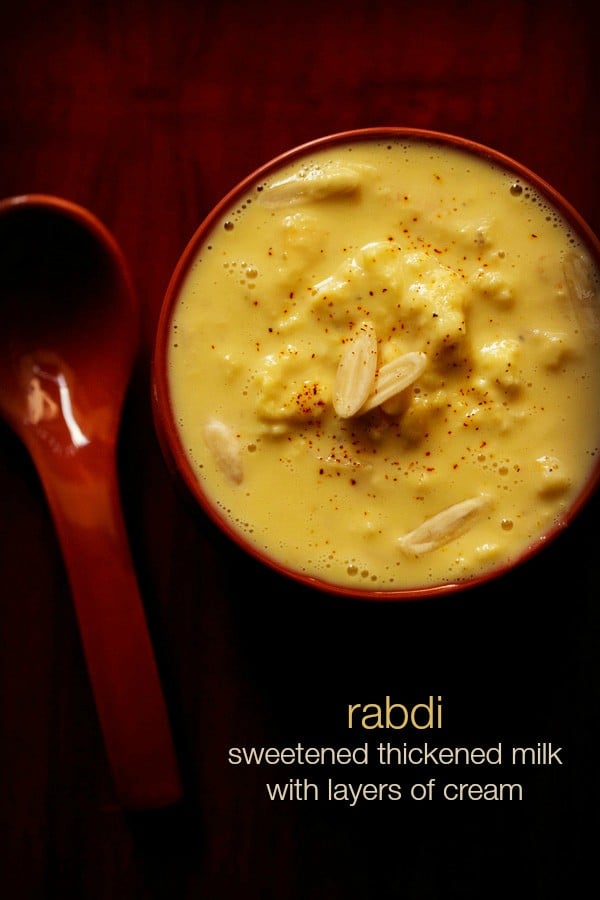
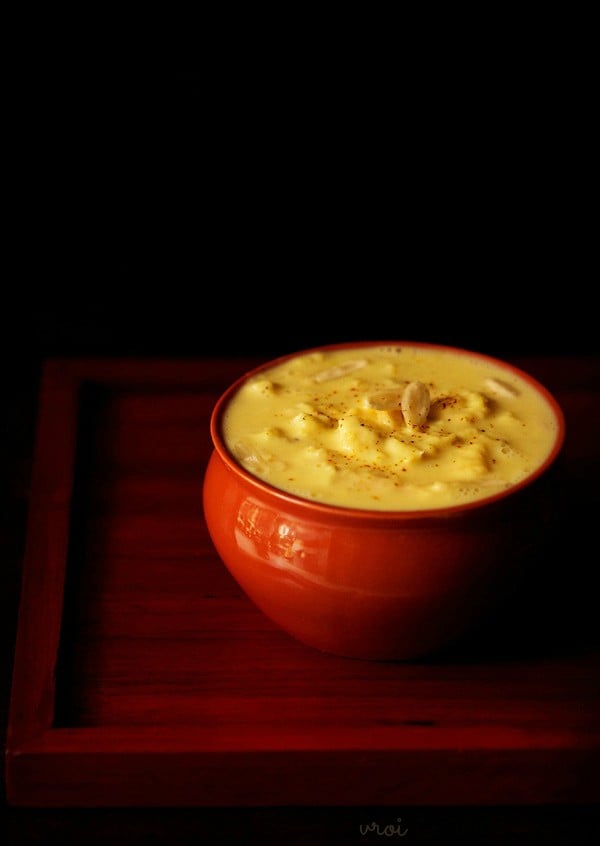
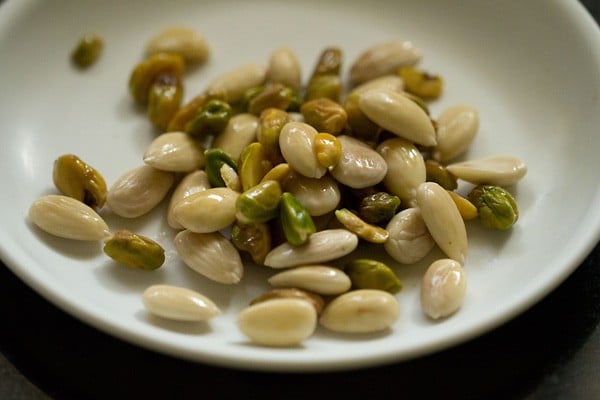
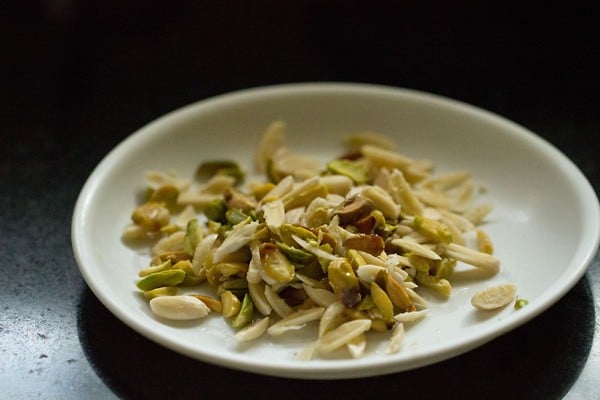
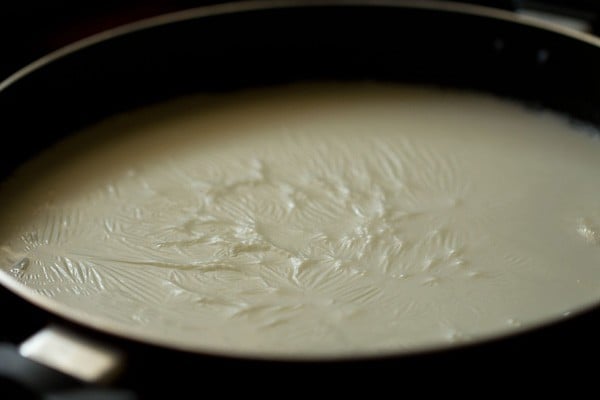
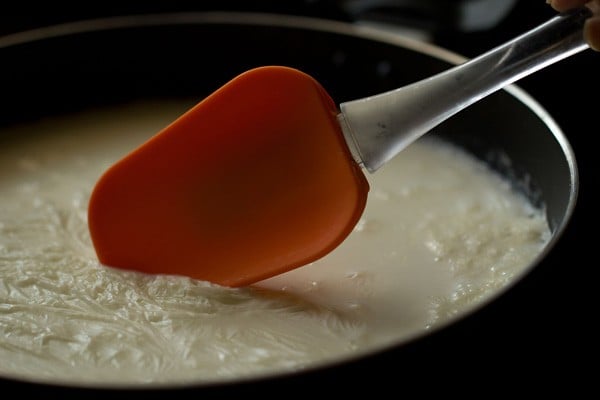
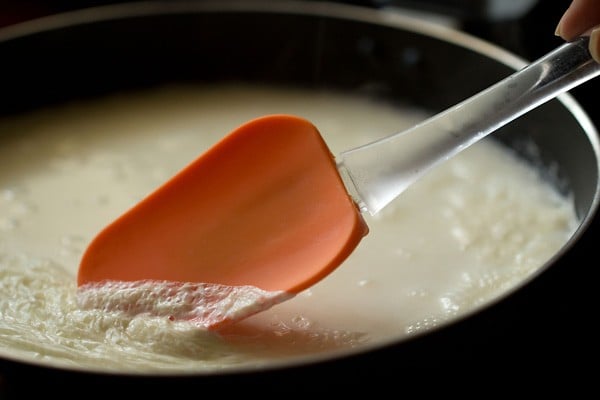
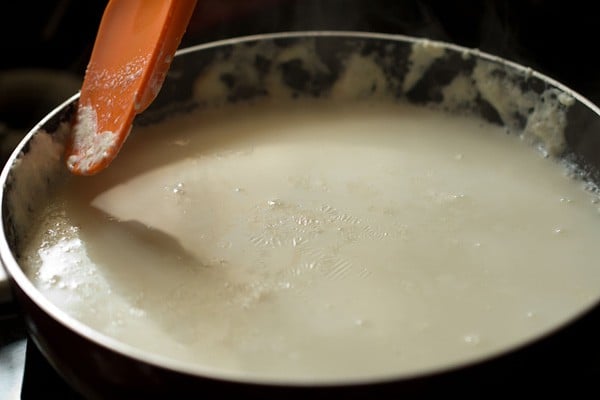
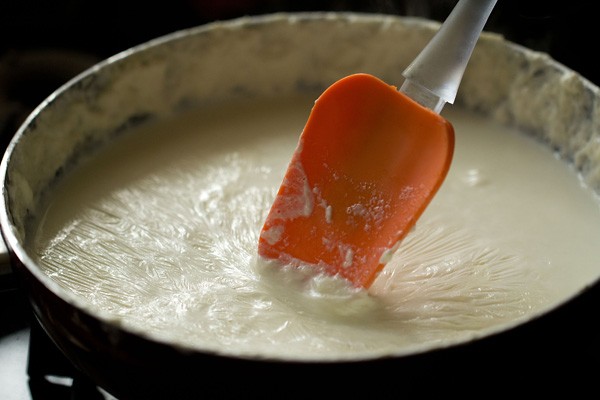

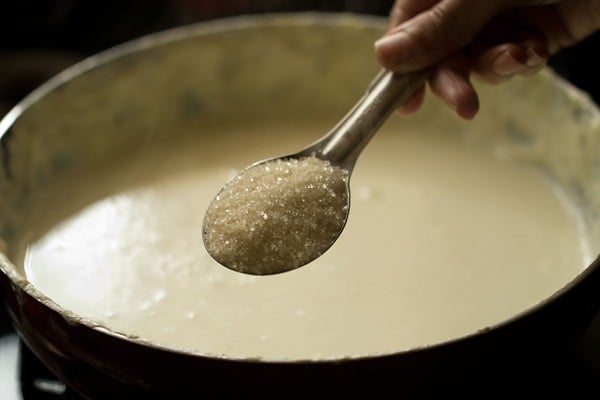
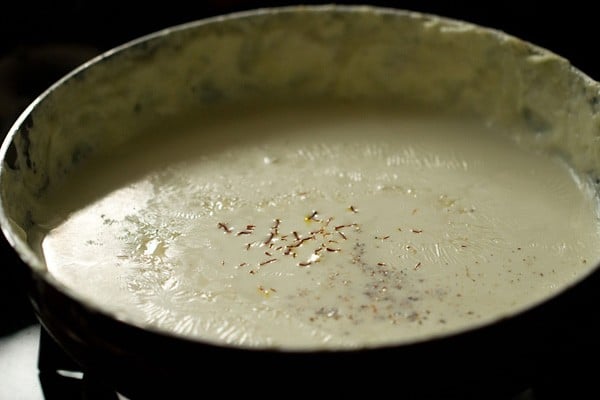
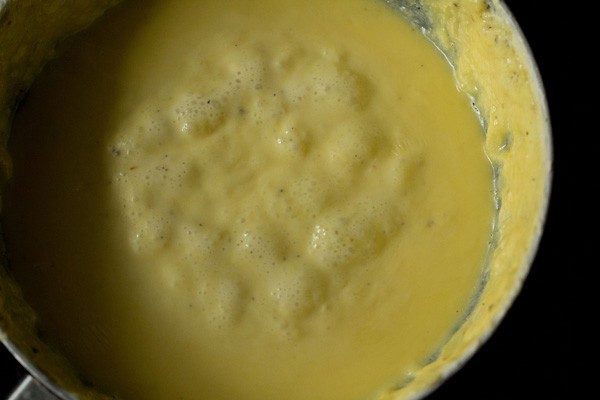
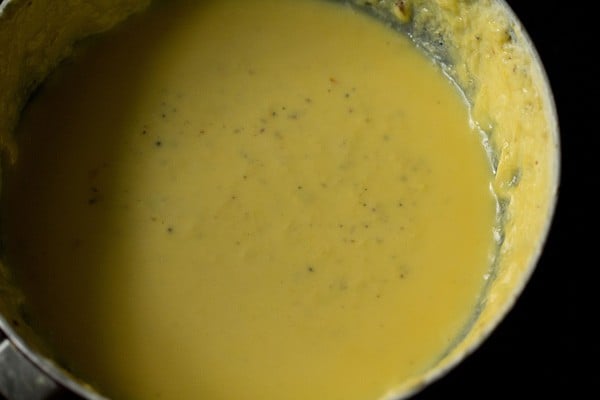
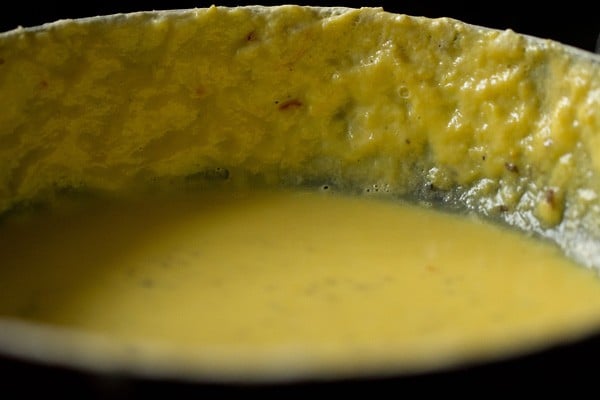
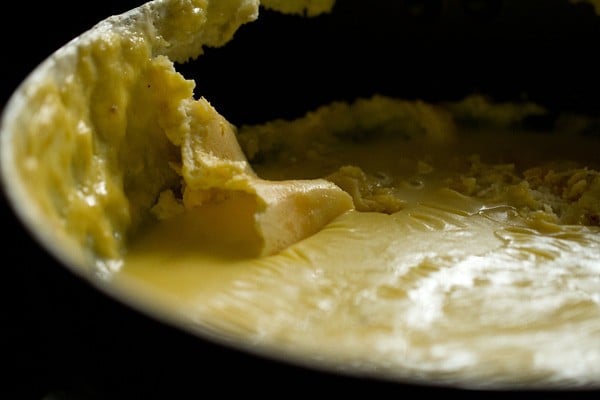
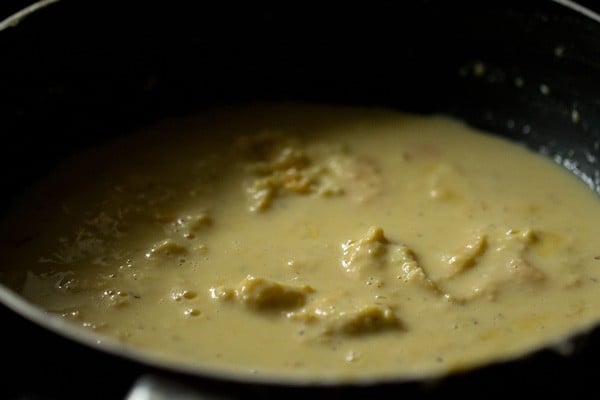

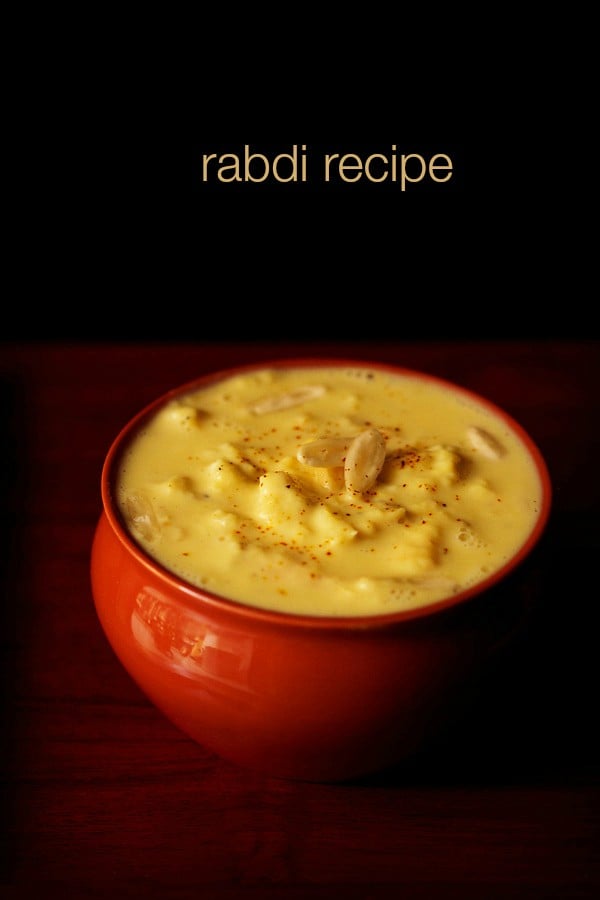
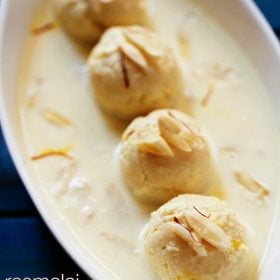
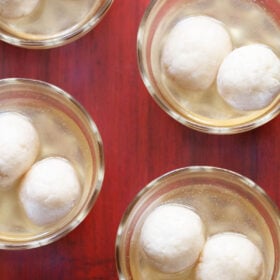
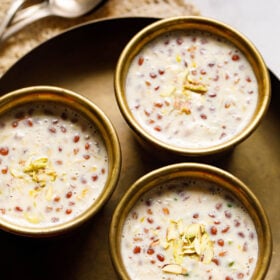
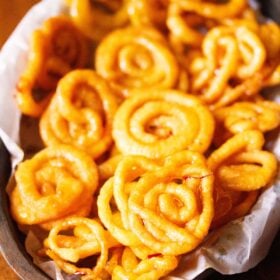

title: “Rabdi Recipe Rabri Sweet Thickened Milk” ShowToc: true date: “2024-09-25” author: “Marjorie Villa”
About Rabdi Recipe
Traditional rabdi (called Lachha rabdi in Hindi) is a luscious dessert that’s often enjoyed for special occasions and holidays. And it’s easy to see why this treat deserves to be served at nearly every celebration! Rabri features creamy layers of clotted cream (malai), crunchy nuts in a deliciously thick condensed milk. Each bite is a delightful combination of sweet flavors and textures that keeps you going in for another spoonful. To make this rabri recipe does take a bit of time; however, the steps are quite simple. Start to finish you need a bit over an hour to prepare – but it is made in just one pot. Typically a kadai is used, as the broad shape helps the milk to cook and evaporate more quickly. But any thick-bottom deep pan with a larger surface area will do the trick! Whole milk is simmered low and slow until it becomes a slightly-thick sweetened condensed milk, which is the base layer of the dish. As the milk cooks and cream forms on top, this cream is collected on the side of the pot to form layers of thicker clotted cream. These malai layers are then added back into the condensed milk along with chopped nuts and delicate rose water to create distinct different textures. The rabdi is served warm or chilled, either as dessert by itself or with other tasty sweet treats. Try this beloved classic rabri recipe for your next gathering, and be prepared for rave reviews!
What kind of pan to make Rabdi
A point to be noted is to use the right kind of pan when making sweets like rabdi. The milk is slow simmered which leads to water getting evaporated from it. To quicken and speed up this process, it is best to use a pan with a larger surface area. This larger surface area helps in the evaporation process. An Indian kadai (wok) fits perfectly as its larger surface area helps to evaporate the water faster. I would not recommend to make rabri recipe in a saucepan or pot as this will take a lot of time to reduce and thicken the milk. You can also opt to use a large frying pan or a frying or sautéing skillet (not a flat skillet). Whichever pan you use, make sure it is heavy or has a thick bottom so that the milk does not scorch or burn.
How to Make Rabdi Recipe
Blanch Nuts
Before you begin heating and simmering milk, I suggest to blanch the nuts and keep them ready. This blanching step is optional and you can simply sliver or chop the nuts. Blanching nuts improve their texture and taste. To blanch the nuts follow the steps below.
- Soak the almonds and pistachios in hot water for 20 to 30 minutes. Then remove the peels.
- Slice, sliver or chop the nuts and set aside.
Cook to Reduce Milk
- Add 1.25 litres of full fat whole milk in a kadai, and slowly heat the milk on a low to medium heat. Stir a few times when the milk gets heated. The milk should slightly simmer but not boil. Once hot, the milk with start to froth or form a layer of cream (malai) on top.
- When you will see the cream floating on top, use a spatula to gently move the cream layer to the side of the pot.
- Stick the cream to the side of the pan.
Collect Cream To Make Rabri
- Continue simmering and stirring the milk on a low heat, collecting the cream layer on the sides, and sticking it to the pan. You’ll be doing this for about an hour while the milk reduces, so be sure to keep a close eye on it so the milk doesn’t burn or stick to the bottom of the pan. 7. This process of collecting the cream has to be done many times. The finesse to making this rabri recipe is that you have to take care to find the right balance between leaving the milk alone so that the cream forms, but also stirring enough so that it doesn’t stick and burn on the bottom. Keeping the above point in mind, stir the milk a few times after you have moved the layer of cream to the sides of the pan.
- In this photo the milk has reduced to half about 30 minutes later. Notice that the layers of cream collected on the sides has thickened also.
Make Rabdi Recipe
- Once the milk has reduced to half, then add 2.5 to 3 tablespoons of sugar to taste.
- Then add a 15 to 18 strands of crushed saffron and ½ teaspoon cardamom powder. Stir gently.
- Continue to gently stir the milk and collect the cream on the side of the pan. The rabri will turn a lovely yellow shade once the saffron has been fully incorporated. 12. Now, in this photo, the milk has got reduced to ⅓ of its original quantity. This took roughly 1 hour 15 minutes. Turn the heat off once the rabdi is the volume and consistency you like. You can also reduce milk to ¼ of its original volume. 13. The cream layer will be collected on the sides. 14. Scrape off the entire cream layer, as well as any dried milk solids with a spatula, and add back to the thickened milk. 15. Stir gently.
- Now add the sliced almonds and pistachios, plus 1 teaspoon rose water or kewra water (pandanus water). Stir and mix gently again. Reserve a few of the blanched nuts for garnish.
Serving and Storage Suggestions
Serve rabdi hot or warm or chilled. If not serving hot or warm, let rabdi cool at room temperature. Transfer the cooled rabdi in an air-tight steel container and refrigerate it for a few hours to cool. Remember that it will thicken more as it cools at room temperature and even in the refrigerator. So keep the consistency slightly thin if you want to refrigerate it and serve cold. Whether you serve hot or warm or cold, garnish with some of the blanched nuts and sprinkle a bit of crushed saffron if you like. Rabdi keeps well in the refrigerator for 3 to 4 days. Store leftovers in an air-tight bowl or container in the fridge.
Expert Tips
Milk: While making a creamy dish with layers of clotted cream a.k.a malai it is always best to use whole milk or full fat milk. Try not to make this sweet with low-fat milk or skimmed milk. You can consider using homogenized milk, but you won’t get thick layers of malai but thin layers and the rabdi will have a less creamy consistency.Pan type: As I have mentioned above when making recipes which require evaporation of liquids, always uses pans with a larger surface area. The larger surface area speeds up the evaporation process. You can use a non-stick kadai or steel kadai. But make sure that whichever pan or kadai you use, it should be heavy and have a thick bottom. Cooking: To make this dish the milk is simmered on a low heat. You do need to stir so that the milk does not burn at the bottom of the pan. But when you see the layer of malai or clotted cream forming then do not stir as you will break this layer. When the layer is seen and properly formed, then gently bring it to the side of the pan with a spatula. After that you can stir the milk a few times until you see the next layer of malai forming. Nuts and flavorings: Feel free to add nuts and flavorings that you have. You can add slivered or chopped almonds, cashews, pistachios and pine nuts. For flavorings, you can mix and match or add only one flavoring ingredient – cardamom powder, rose water, vanilla extract, kewra water (pandanus water) or saffron are some optionsTo blanch nuts or not? While I prefer to blanch nuts when adding them to sweets, you can opt to skip the blanching step. Simply chop or sliver them and add to the rabdi when you add saffron. Scaling: This rabri recipe serves 3 as is. Scale it to make 6 servings or more. Remember if you scale up the recipe, it will take more time for the milk to condense, reduce and thicken.
Please be sure to rate the recipe in the recipe card or leave a comment below if you have made it. For more vegetarian inspirations, Sign Up for my emails or follow me on Instagram, Youtube, Facebook, Pinterest or Twitter. Rasmalai Recipe | Rasmalai Sweet Rasgulla Recipe | How to make Soft Rasgulla Basundi Recipe | How to make Basundi Sweet Jalebi Recipe | Best Homemade Jalebi Recipe This Rabdi recipe from the archives, first published in Jan 2015 has been republished and updated on October 2021.























